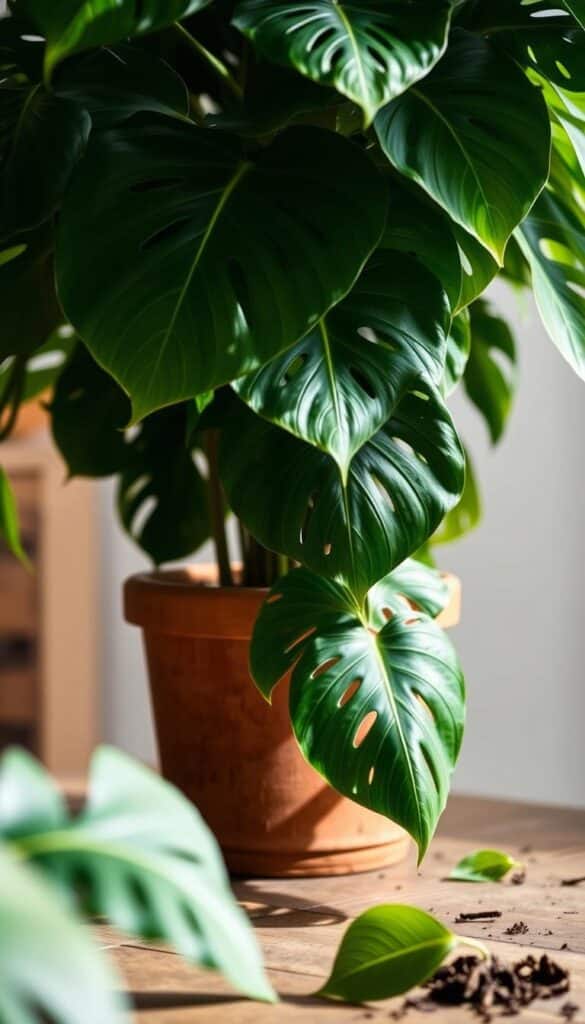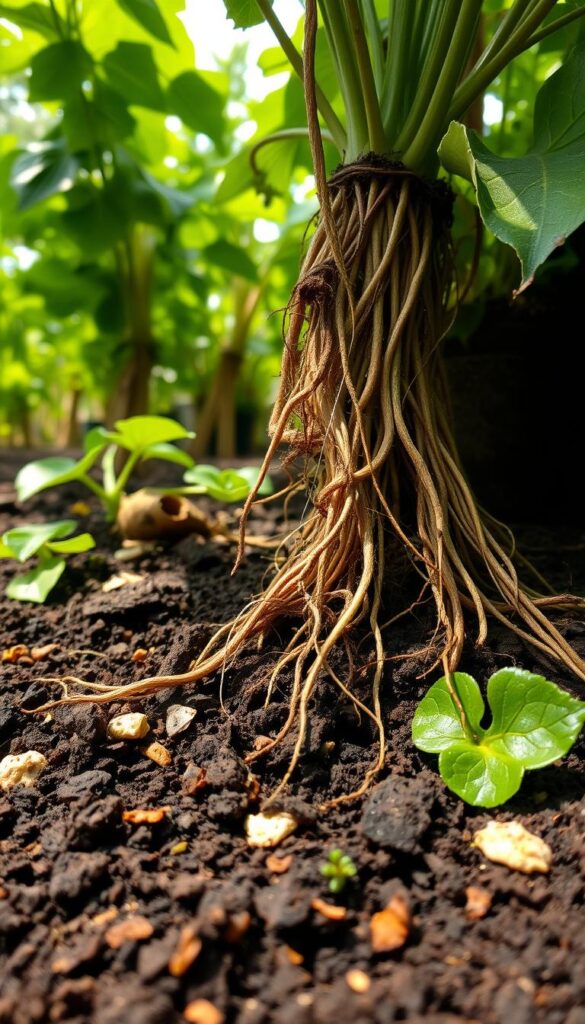Have you ever come across a plant that instantly captivates your heart with its unique beauty? For me, it was the moment I laid eyes on the Monstera Adansonii Swiss Cheese Vine. With its lacy, perforated leaves and trailing elegance, this plant has become a favorite among many indoor gardeners and outdoor enthusiasts alike.
Known affectionately as the Swiss Cheese Plant, this stunning specimen is celebrated not only for its visual appeal but also for its ease of care. Whether you choose to let it trail gracefully or train it to climb, the Monstera Adansonii adapts beautifully to any setting, making it a versatile addition to your space.
Originating from the lush regions of South America, this plant carries a rich cultural heritage. Its unique leaves, which resemble Swiss cheese, have made it a standout compared to other Monstera species. The story of how it found its way into our homes is as fascinating as its appearance, blending nature’s artistry with human care.
As someone who has had the pleasure of nurturing this plant, I can attest to its charm and resilience. In the following sections, we’ll delve into detailed care tips and historical insights, all sourced from trusted gardening experts, to help you bring out the best in your Monstera Adansonii.
Key Takeaways
- The Monstera Adansonii Swiss Cheese Vine is renowned for its distinctive, perforated leaves.
- It thrives in both indoor and outdoor settings with minimal care requirements.
- The plant can be trained to climb or left to trail, offering versatile decorative options.
- Its origins trace back to South America, adding a touch of exotic elegance to any space.
- With proper care, the Swiss Cheese Plant becomes a long-lasting, beautiful houseplant.
Overview of the Monstera Adansonii Swiss Cheese Vine
The Monstera Adansonii Swiss Cheese Plant is a true marvel of nature, captivating plant enthusiasts with its unique beauty and adaptability. Native to the tropical regions of Central and South America, this plant has become a beloved choice for indoor spaces due to its distinctive appearance and relatively low-maintenance care.
History and Origins
Hailing from the lush rainforests of Central and South America, the Monstera Adansonii has a rich history that dates back centuries. Its journey from wild growth to becoming a popular houseplant is a testament to its resilience and appeal. The plant’s common name, “Swiss Cheese Plant,” was coined due to its perforated leaves, which resemble Swiss cheese.
Unique Design and Growth Habits
The Monstera Adansonii is renowned for its striking, perforated foliage that gives it a lacy texture. This unique design not only adds aesthetic value but also serves a functional purpose, allowing the plant to adapt to its environment efficiently. Its climbing habit and the formation of aerial roots make it an excellent choice for those who appreciate versatility in plant growth. Unlike its cousin, the Monstera deliciosa, the Adansonii is more compact and trailing, making it ideal for hanging baskets or trained to climb up trellises.
| Lighting Condition | Effect on Foliage | Recommended Placement |
|---|---|---|
| Bright, Indirect Light | Promotes healthy, vibrant leaves with distinct perforations | Near an east- or west-facing window |
| Low Light | May lead to less pronounced perforations and slower growth | Areas with limited natural light, but avoid direct sunlight |
| Direct Sunlight | Can cause leaf scorch and discoloration | Avoid placing near south-facing windows without shade |
Understanding the history and design of the Monstera Adansonii enriches the experience of caring for it. This plant’s unique growth habits and adaptability make it a standout addition to any indoor or outdoor setting, offering both beauty and functionality.
Essential Care Tips for Your monstera adansonii swiss cheese vine
Caring for the Swiss Cheese Plant is all about balance. With the right daily routine and seasonal adjustments, you can keep your plant thriving all year round.
Daily Care Routine
Start your day by checking the soil moisture. Water your plant when the top inch of soil feels dry to the touch. Overwatering can lead to root rot, so it’s better to err on the side of caution. Also, take a moment to inspect the leaves—gently wipe away any dust with a damp cloth to ensure proper light absorption.
Seasonal Adjustments
As the seasons change, so should your care routine. During spring and summer, increase watering slightly to support active growth. In fall and winter, reduce watering to once every 10-14 days, as the plant grows more slowly. Humidity levels should remain consistent, around 50-70%, to mimic the plant’s natural habitat.
| Care Aspect | Recommendation | Frequency |
|---|---|---|
| Watering | Allow top inch of soil to dry | Every 7-10 days |
| Humidity | Maintain 50-70% humidity | Daily |
| Leaf Care | Wipe leaves with damp cloth | Weekly |
By following these simple tips, you’ll be well on your way to becoming a Swiss Cheese Plant expert. Remember, consistency is key to keeping your plant happy and healthy!

Light, Water, and Humidity: Creating the Ideal Environment
Creating the perfect environment for your Swiss Cheese Plant involves balancing light, water, and humidity. These elements are crucial for its health and beauty.
Optimal Lighting Conditions
Position your plant near a north- or east-facing window for bright, indirect light. Direct sunlight can burn the leaves, so sheer curtains can help filter the light. I’ve found that placing my plant by a window with filtered sunlight keeps it thriving without risking damage.
Watering Schedule and Humidity Tricks
Water your plant when the top inch of soil feel dry. Overwatering can lead to root rot, so it’s better to water every 7-10 days. For humidity, mist the leaves with distilled water or place the plant on a tray with pebbles and water to maintain moisture without soaking the soil.
By adjusting light exposure and watering frequency with the seasons, you can keep your Swiss Cheese Plant happy and healthy all year round. These simple adjustments make a big difference in its growth and appearance.
Soil, Drainage, and Fertilization Strategies
When it comes to nurturing your plant, the right soil and drainage system are essential for healthy growth. Proper fertilization also plays a crucial role in maintaining its vibrant appearance.
Best Soil Mix for Drainage
A well-aerated, peat-based potting mix is ideal for this plant. This type of soil retains moisture but drains excess water, preventing root rot. I recommend adding perlite or sand to enhance drainage further.
Incorporating organic matter like compost can enrich the soil, promoting robust root development. This balanced approach ensures your plant thrives without waterlogging.
Fertilizer Application Tips
Fertilizing should be done sparingly, especially during the growing season. Use a balanced fertilizer to provide essential nutrients without causing salt buildup. A mix of liquid and granular fertilizers works well, applied at half the recommended strength to avoid burning the roots.
| Soil Component | Benefits |
|---|---|
| Peat-Based Mix | Retains moisture, drains well |
| Perlite/Sand | Improves drainage, prevents waterlogging |
| Organic Matter | Enriches soil, promotes root growth |

By using the right soil mix and fertilizing wisely, you create an optimal environment for your plant to flourish. These strategies ensure healthy growth and maintain the plant’s stunning appearance.
Training, Pruning, and Propagation Techniques
Keeping your plant looking its best requires some TLC. Let’s dive into how to train, prune, and propagate your plant like a pro.
Pruning for Health and Shape
Pruning is essential for maintaining your plant’s health and desired shape. Use clean, sharp tools to prevent spreading diseases. Focus on removing dead or damaged leaves to encourage new growth and keep your plant bushy.
Training with Moss Poles and Trellises
Give your plant a direction to grow. Moss poles or trellises are great for training. Gently twine the stems around the support. This helps your plant grow upright and showcases its beautiful foliage.
Simple Propagation Methods
Propagate your plant using stem cuttings. Look for healthy stems with at least two nodes. Cut just below a node, remove lower leaves, and plant the cutting in moist soil. Keep it warm and humid until roots develop. Soon you’ll have new plants to share or enjoy.
| Technique | Tools Needed | Best Time |
|---|---|---|
| Pruning | Sharp, clean scissors | Spring-Fall |
| Training | Moss pole or trellis | Year-round |
| Propagation | Stem cuttings, pot | Spring-Summer |
Troubleshooting Common Care Issues
Even with the best care, your Swiss Cheese Plant might face some challenges. Let’s address the most common issues and how to fix them.
Yellow Leaves: A Sign of Overwatering
Yellow leaves are often a sign of overwatering. Check the soil moisture and adjust your watering schedule. Allow the soil to dry slightly between waterings. If roots are affected, consider repotting with fresh, well-draining soil.
Pests: Unwelcome Visitors
Pests like mealybugs can appear. Isolate your plant and treat it with neem oil or insecticidal soap. Repeat as needed to ensure all pests are eliminated.
Root Rot: A Serious Condition
Root rot from poor drainage is serious. Check drainage holes and repot if necessary. Trim affected roots and treat with a fungicide to prevent further damage.
By addressing these issues promptly, you can keep your plant healthy and thriving. Regular checks and quick action will ensure your Swiss Cheese Plant remains a stunning addition to your space.
Decorating and Displaying Your Swiss Cheese Plant
Transforming your space with the Swiss Cheese Plant is an exciting endeavor. Its unique foliage and versatile growth habits make it a perfect addition to any room. Whether you prefer a modern look or a cozy vibe, this plant adapts beautifully to various interior designs.
Indoor Placement and Styling Ideas
One of the joys of owning a Swiss Cheese Plant is its adaptability. You can place it on a tabletop, let it trail from a hanging basket, or train it to climb up a moss pole. For a striking focal point, consider positioning it near a window to capture natural light, but ensure it’s filtered to avoid leaf burn.
Styling the foliage to match your decor is effortless. Use stylish containers that complement your room’s theme, whether it’s a sleek ceramic pot or a woven basket. The plant’s perforated leaves add a natural texture that enhances any setting. Plus, incorporating decorative elements like moss poles can elevate its appearance while supporting healthy growth.
As interior designer Emily Henderson once said, “Plants are the perfect way to add life and texture to a room.” Experiment with different arrangements to reflect your personal style, making your space truly unique.
By thoughtfully placing and styling your Swiss Cheese Plant, you can create a stunning display that enhances your home’s ambiance. Let your creativity shine and enjoy the beauty this plant brings to your indoor space.
Conclusion
Caring for the Swiss Cheese Plant is a journey that combines art and science. By balancing light, water, and soil, you create an environment where your plant can thrive. This unique houseplant, with its perforated leaves and adaptable nature, brings a touch of tropical elegance to any room.
Remember, the right potting mix and container are essential for healthy growth. Ensure good drainage and maintain humidity levels to mimic its natural habitat. These small adjustments can make a big difference in your plant’s long-term health.
Don’t hesitate to experiment with training your plant to climb or propagate new cuttings. These activities not only add variety to your space but also deepen your connection with your plant. As you care for your Swiss Cheese Plant, you’ll find it to be a rewarding companion that brings joy and beauty to your home.
I encourage you to share your experiences and tips for nurturing this incredible plant. Whether you’re a seasoned gardener or just starting out, the Swiss Cheese Plant is sure to captivate and inspire. With proper care, it will remain a stunning focal point in your indoor space for years to come.
